Nonnative, exotic, or alien species are animals and plants living outside their native ranges as a result of human action. Some of these species become invasive, meaning they cause harm to the environment, to the economy, or to human health. South Florida has more than its share of invasive plants, reptiles, amphibians, fish, mammals, birds, and invertebrates.
Nonnative species often spread quickly. Research and monitoring can help managers anticipate which species will cause harm before it is too late to remove them. Identifying where a species is on the invasion curve is the first step to taking management action.
The invasion curve shows that eradication of an invasive species becomes less likely and control costs increase as an invasive species spreads over time. Prevention is the most cost-effective solution, followed by eradication. If a species is not detected and removed early, intense and long-term control efforts will be unavoidable.
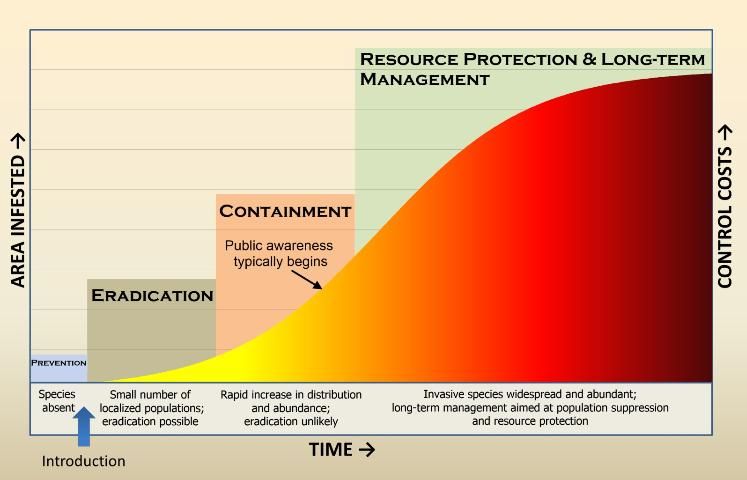
Four Categories of Invasive Species Management
Prevention
The most cost-effective way to reduce impacts of invasive species is to prevent them from establishing in the first place. Restricting the trade of nonnative species at both their points of origin and ports of entry prevents their introduction. Quantitative risk assessments and screening procedures can identify "risky" animal and plant species for which trade is restricted. Public involvement can help through programs such as Don't Pack a Pest (www.dontpackapest.com) and Exotic Pet Amnesty (www.myfwc.com/nonnatives).
Eradication
Complete removal of an invasive species may be possible if we detect it soon after its introduction and immediately take steps to eradicate it. Early detection and rapid response (EDRR) can be effective, yet it is more costly than prevention. EDRR is enhanced by ongoing regional monitoring, research into species' life histories and impacts, and development of detection and removal tools. The public can help by learning how to detect and report invaders at www.IveGot1.org or 1-888-IVE-GOT1.
Containment
If people do not take immediate action to stop them, invasive species reproduce and spread. Complete eradication becomes increasingly unlikely as species increase in number. When populations become established, the goal shifts to preventing the spread of a species. Intense efforts are necessary to contain the core population of a species and eradicate it from new areas. It is at this stage that the public typically becomes aware of the invasive species.
Resource Protection and Long-Term Management
When an invader is too widespread and abundant to control everywhere it occurs, eradication becomes impossible. Long-term management aims to reduce populations to the lowest feasible levels and to protect specific highly valued resources. Community support can be critical to ensure success of long-term management programs.
Examples of Species in Each Phase of the Invasion Curve
Prevention
Puff Adder (Bitis arietans)
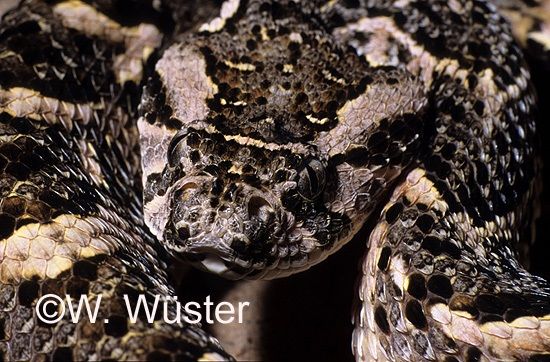
Credit: © W. Wüster
This venomous snake was identified as a potential invader because it is frequently imported and difficult to manage as a pet. If it establishes in Florida, this species poses danger to humans and the ecosystem. In Africa, puff adders are responsible for more snakebite deaths than any other species.
Asian Longhorned Beetle (Anoplophora glabripennis)
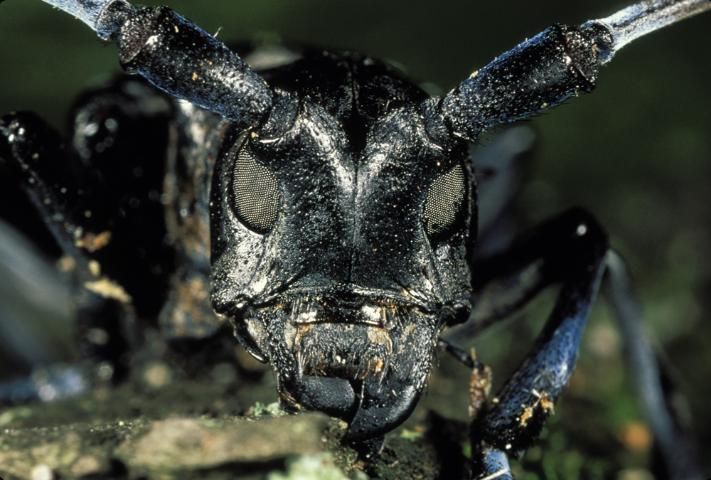
Credit: U.S. Fish & Wildlife Service
The United States Department of Agriculture and Customs and Border Protection inspect imported agricultural products for insect "hitchhikers." The ALB is currently destroying forests in the northeastern United States. Preventing this high-risk species from entering Florida will save millions of dollars in management costs.
Eradication
Giant African Land Snail (Lissachatina fulica)
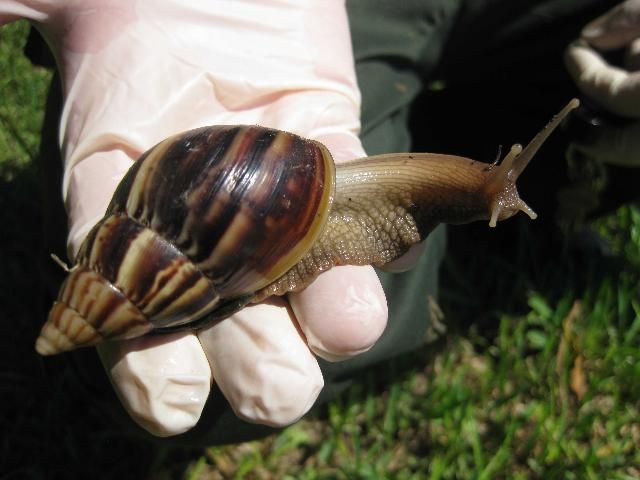
Credit: © Andrew Derksen, Florida Department of Agriculture and Consumer Services
The GALS is a voracious plant eater that threatens Florida agriculture. An emergency eradication program was initiated immediately after these snails were detected. Aggressive removal and treatment have proven successful at all known locations, indicating that eradication is possible.
Containment
Argentine Black & White Tegu (Tupinambis merianae)
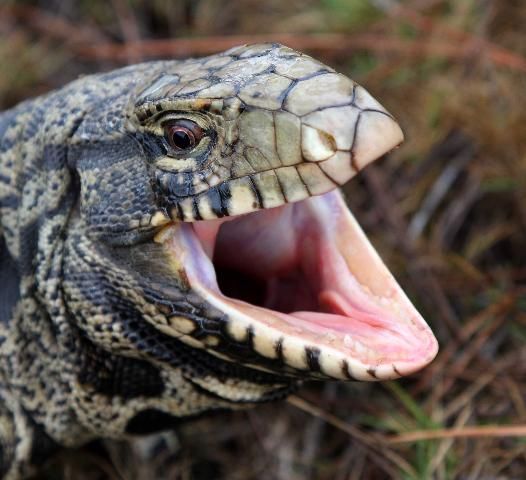
Credit: © Dustin Smith, Zoo Miami
Tegus have established populations in south Florida and are expanding to new areas. To stop the spread, managers are removing tegus, monitoring the populations, and educating the public about reporting tegus. These large lizards were introduced through the pet trade and are a threat to native wildlife.
Resource Protection & Long-Term Management
Old World Climbing Fern (Lygodium microphyllum)
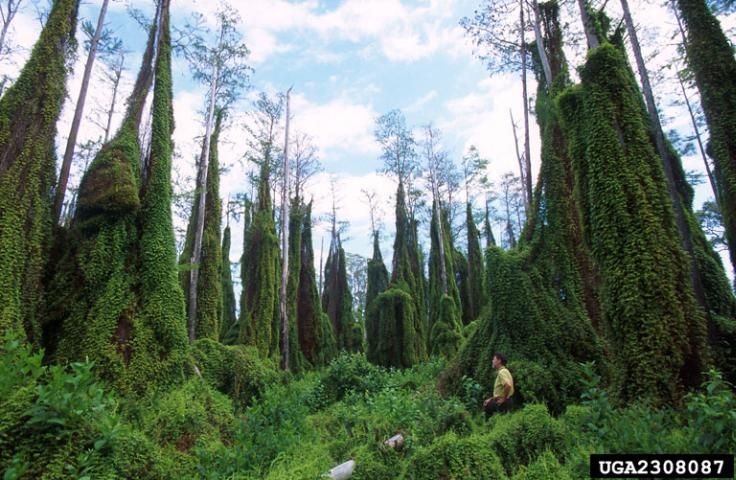
Credit: © U.S. Department of Agriculture, Agricultural Research Service
This invasive vine smothers trees and plants in swamps and other wet areas. It forms thick mats of dead plant material that increase fire risk. Lygodium is widespread in south and central Florida and cannot be eradicated. Management aims to suppress its growth through biocontrols and herbicides.
Burmese Python (Python molurus bivittatus)

Credit: © Jemeema Carrigan, University of Florida
Burmese pythons eat a variety of prey, including endangered species, and may be responsible for a severe decline of mammals in the Everglades. Despite considerable research and development of control methods, no effective management option currently exists to remove pythons year-round across the landscape.
How You Can Help
Public involvement is needed at every stage of the invasion curve. You can:
- Prevent further invasions by being a responsible pet owner. Do your research before buying exotic pets and remember, Don't Let It Loose!
- Contact the Pet Amnesty hotline at 1-888-IVE-GOT1 to find a home for an unwanted exotic pet.
- Apply to be an exotic pet adopter at www.myfwc.com/nonnatives.
- Help with eradication and containment by reporting invasive species at www.IveGot1.org, 1-888-IVE-GOT1, or on the IveGot1 mobile apps.
- Remove invasive plants and animals from your yard and consider landscaping with native plants.
- Inspect boating and fishing equipment and remove any plants and animals before going out and coming home.
- Support long-term management efforts by learning about laws and regulations and supporting organizations that manage invasive species.
For more information contact
Frank J. Mazzotti
UF/IFAS Fort Lauderdale Research & Education Center
3205 College Ave., Davie, FL 33314
Email: fjma@ufl.edu
http://crocdoc.ifas.ufl.edu/
www.EvergladesInvasives.org